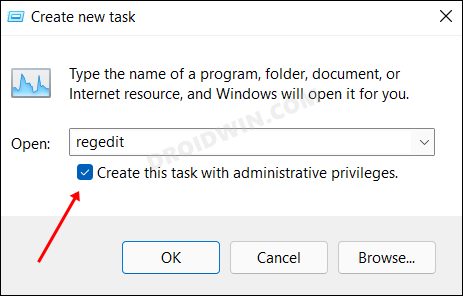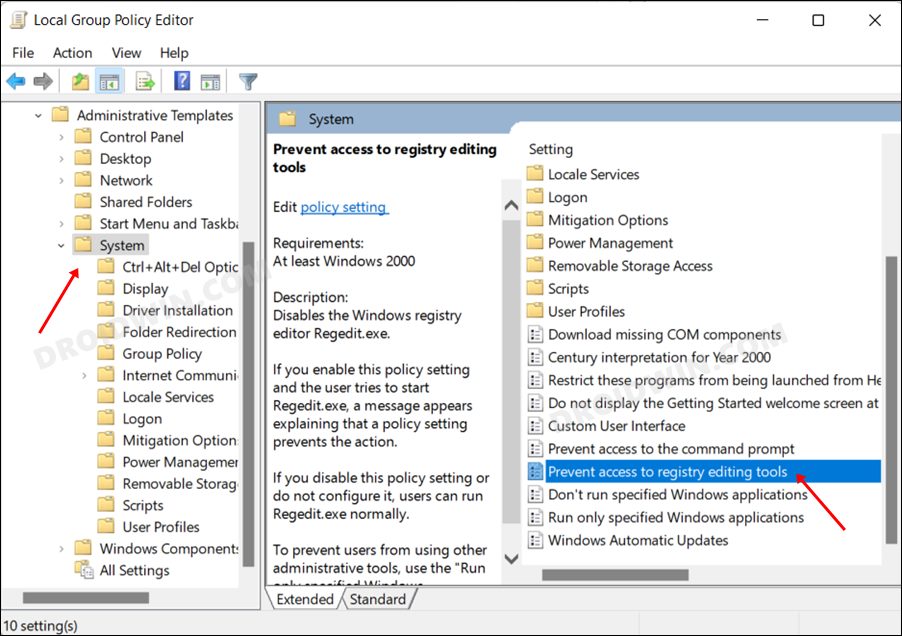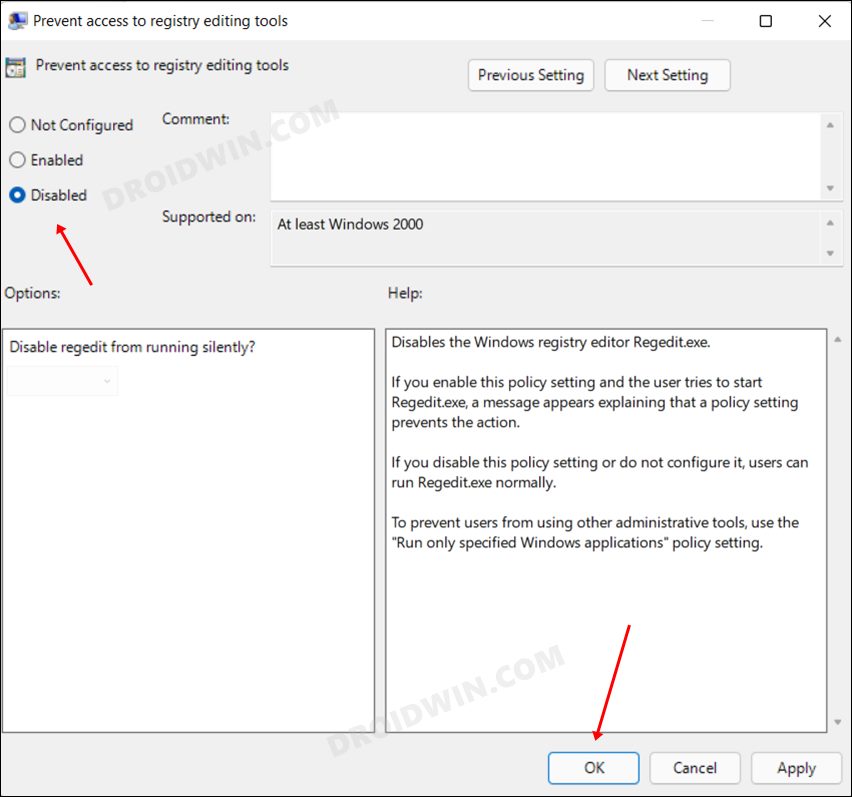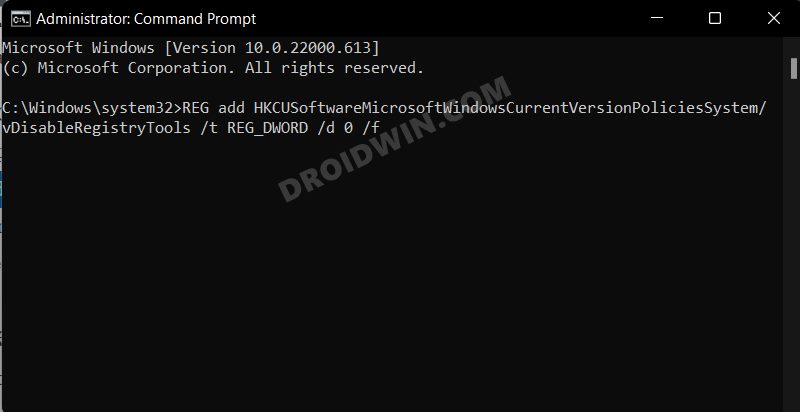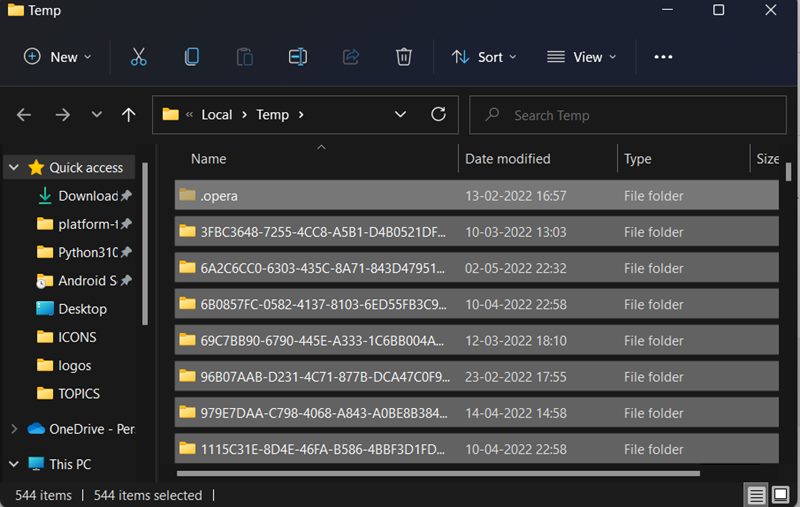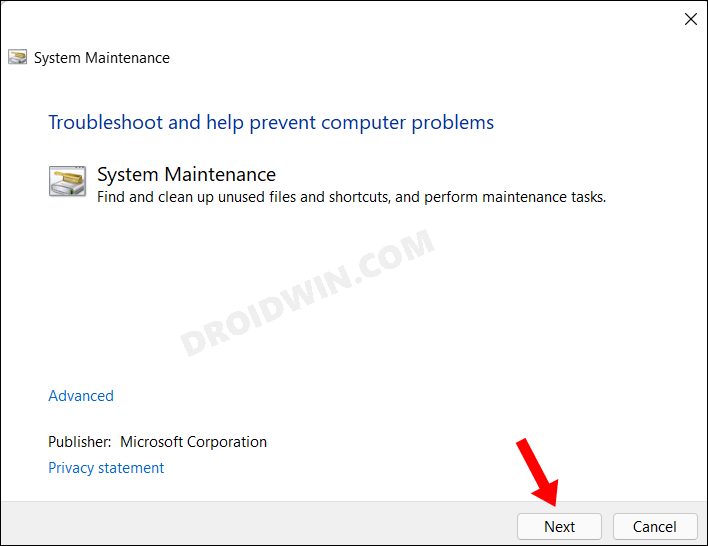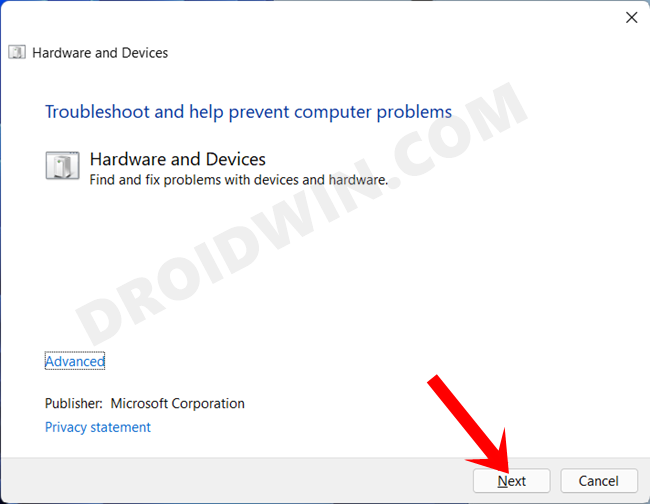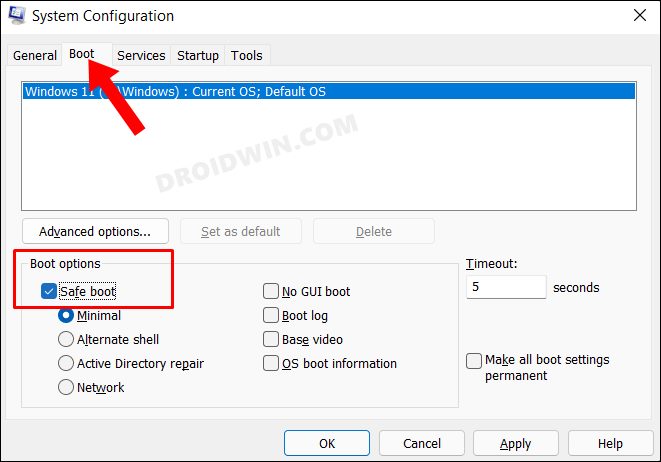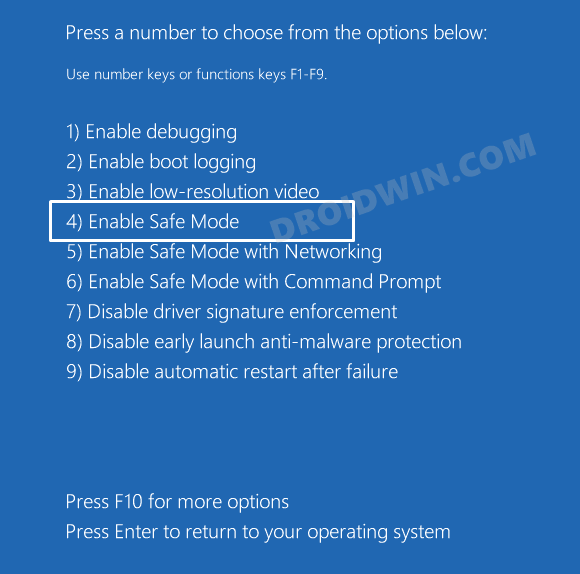In this guide, we will show you various methods to fix the Registry Editor not working issue on your Windows 11 PC. This system application is part of the Windows OS and allows you to create, edit, modify, and delete various registry files. Earlier it was strictly used by tech enthusiasts but now even everyday users make use of the same to enable certain hidden functionalities. Right from tweaking the right-click menu, to making changes to the taskbar or even hiding items from the Settings menu, there’s a lot to look forward to.
However, some users are having a hard time accessing it. A slew of complaints are lined up from the Windows users wherein they have voiced their concern that the Registry Editor not working on their PC. While some are unable to even launch it in the first place, others are facing issues in creating DWord or string files. Likewise, some have said that they are unable to change the value data of a specific registry. If you are also in the same boat, then this guide will make you aware of a few nifty workarounds to resolve these issues. Follow along.
Table of Contents
How to Fix Registry Editor not working in Windows 11
It is recommended that you try out each of the below-mentioned workarounds and then see which one spells out success for you. So with that in mind, let’s get started.
FIX 1: Run Registry Editor as Admin
To begin with, you should consider launching the Local Security Policy with an elevated permission set. Here’s how it could be done-
- Bring up the Task Manager via Ctrl + Shift + Esc shortcut keys.
- Then click on File > Run New Task and type in the below value
regedit

- Enable ‘Create this task with administrative privileges’ and hit OK.
- Check if it fixes the Registry Editor not working issue on your Windows 11 PC.
FIX 2: Enable Registry Editor via Local Group Policy Editor
Your next course of action should be to disable and then re-enable the Registry Editor via Local Group Policy Editor [LGPE]. Do note that LGPE is only available on the Pro, Enterprise, and Education version of Windows. If you are on the Home Edition, then first enable the LGPE using the instructions given here- How to Enable Group Policy Editor in Windows 11 Home. Once that is done, you may then proceed with the below steps-
- Bring up Run via Windows R shortcut keys and type in the below command-
gpedit.msc
- This will open Local Group Policy Editor. Go to the below location from its left-hand side
User Configuration > Administrative Templates > System
- Now open the ‘Prevent access to registry editing tools’ policy from the right-hand side.

- Then select Disabled followed by OK. Finally, restart your PC for the changes to be saved.

- Check if it fixes the Registry Editor not working issue on your Windows 11 PC.
FIX 3: Enable Registry Editor via CMD
If you aren’t willing to enable LGPE on your Windows Home Build or if the LGPE tweak didn’t spell out success, then you could also carry out this task via Command Prompt. Here’s how-
- Launch CMD as an admin from the Start menu.
- Then copy-paste the below command and hit Enter
REG add HKCUSoftwareMicrosoftWindowsCurrentVersionPoliciesSystem/ vDisableRegistryTools /t REG_DWORD /d 0 /f

- Finally, restart your PC for the changes to be saved.
- Now check if it fixes the Registry Editor not working issue on your Windows 11 PC.
FIX 4: Delete Temporary Files
In some instances, the temporarily stored files could lead to a few conflicts with the proper functioning of your PC. Therefore, you should consider deleting these cached files and then test out the results.
- Launch Run via Windows + R shortcut keys.
- Then copy-paste the below command and hit Enter. This will take you to the temp folder.
%temp%

- Use the Ctrl + A shortcut to select all the files and hit the Del key to delete them.
- Check if it fixes the Registry Editor not working issue on your Windows 11 PC.
FIX 5: Use Windows Troubleshooter
Windows comes built-in with quite a few troubleshooter apps that scan for issues and bring out the related fixes. As for the current issue, we will be using the System Maintenance and the Hardware and Devices troubleshooters, as they are the best fit to resolve this bug.
- Bring up the Run dialog box via Windows R shortcut keys.
- Then type in the below command and hit Enter
msdt.exe -id MaintenanceDiagnostic
- This will launch the System Maintenance troubleshooter, click Next to continue.

- It will now scan for underlying issues and bring up the related fix as well.
- Just select the fix to implement and then check if the issue has been fixed or not.
- If it is still there, then enable the Hardware and Devices troubleshooter on your PC.

- Then launch it, click Next and let it scan for issues. Then apply the fixes that it brings up.
- Check if it fixes the Registry Editor not working issue on your Windows 11 PC.
FIX 6: Boot to Safe Mode
In some instances, a third-party app might conflict with the OS functionality as well. The best way to verify and hence rectify this issue is to boot your PC to the Safe Mode. Doing so will disable all the third-party apps and give you the stock environment with just the system apps. If you are able to select multiple files in this mode, then the culprit is an app or software. Therefore, you should consider uninstalling the recently installed apps after which the issue first came to light. Here’s how:
- Bring up the Run dialog box via Windows+R shortcut keys.
- Then type in the below command and hit Enter to open the System Configuration menu
msconfig

- Now go to its Boot tab and checkmark Safe Mode under Boot Options.
- Finally, click OK followed by Restart in the confirmation dialog box.
- Your PC will now boot to Windows Recovery Environment.
- Go to Troubleshoot > Advanced options > Startup Settings > Click Restart > Press 4 to boot to Safe Mode.

- Check if it fixes the Registry Editor not working issue on your Windows 11 PC.
FIX 7: Disable Third-Party Service
A third-party service could also create a few roadblocks in the functioning of this feature. Therefore, you should consider disabling all the non-Microsoft-related services and then test out the results. Here’s how it could be done
- Head over to the Start Menu, search System Configuration, and open it.
- Then go to the Services tab, checkmark Hide All Microsoft Services, and click on the Disable All button.

- Then go to the Startup tab and click on Open Task Manager.


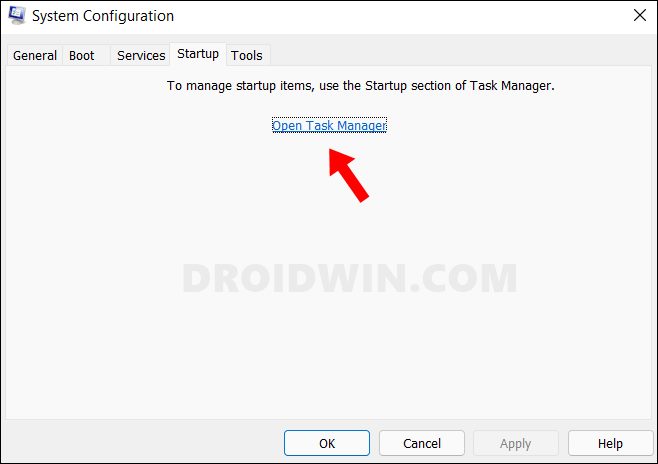
- Now select a process from the list and click Disable. Do so for all the running services.

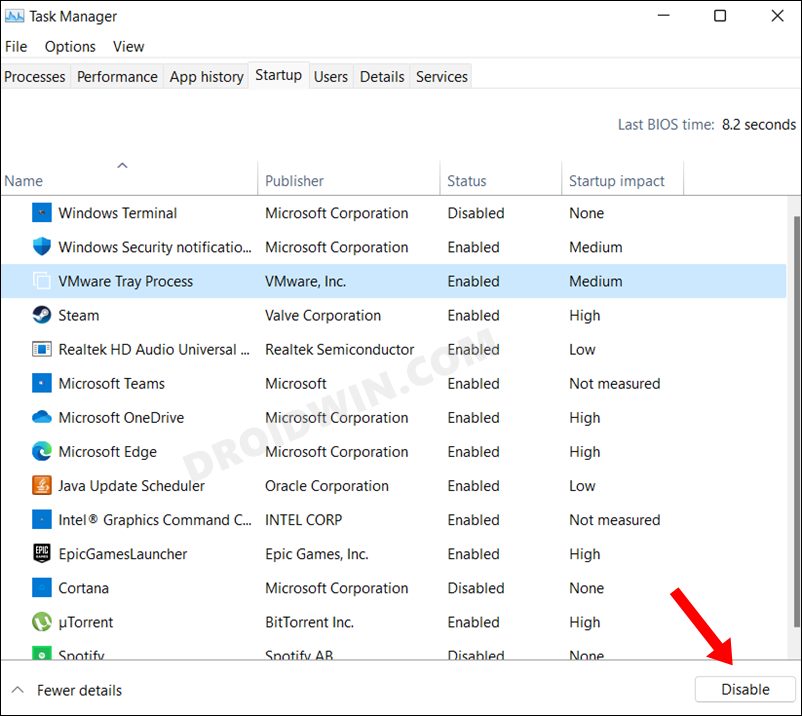
- Once done, restart your PC and then check if it fixes the Registry Editor not working issue on your Windows 11 PC.
FIX 8: Use SFC and DISM Commands
System File Checker and Deployment Image Servicing and Management are two command-line utility tools that scan for corrupt Windows files and then replace them with their working counterpart. The major difference between the two is whereas the SFC replaces the corrupt files with the working ones from the cached directory on your PC, DISM does so by downloading the working files from the online Microsoft servers. And as of now, we would be making use of both these tools to fix the underlying issue.
- Head over to the Start Menu, search Command Prompt, and launch it as an administrator.
- Then copy-paste the below command to open the SFC Tool:
sfc /scannow

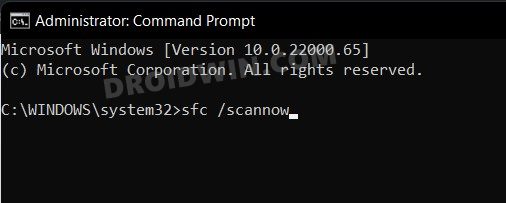
- Once the SFC Scanning is complete, it’s time to use the DISM Tool. So copy-paste the below command:
DISM /Online /Cleanup-Image /RestoreHealth


- Once DISM finishes the scanning, it is recommended to reboot your PC.
- Now check if it fixes the Registry Editor not working issue on your Windows 11 PC.
FIX 9: Run CHKDSK Command
If there are any bad sectors on your disk or if some system files have got corrupted, then it could result in the underlying issue that we are currently facing. In such cases, you could make use of the Check Disk command-line tool and get these issues rectified. Here’s how
- Launch Command prompt as an admin from Start Menu
- Then copy-paste the below command and hit Enter
chkdsk C: /f

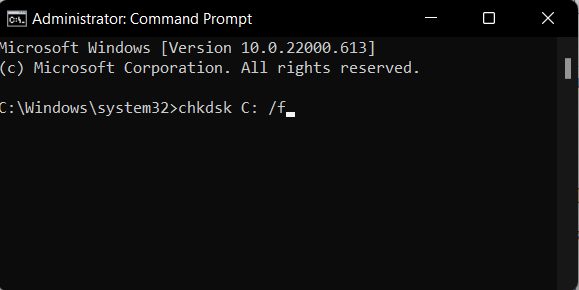
- Now, wait for the scan to complete. Once done, restart your PC.
- Check if it fixes the Registry Editor not working issue on your Windows 11 PC.
FIX 10: Use a Restore Point
If none of the aforementioned methods spelled out success, then you should consider restoring your system to an earlier point during which it was free from this issue. Here’s how it could be done
- To begin with, open the Settings page via the Windows+I shortcut keys.
- Then go to the System tab from the left menu bar, scroll all the way to the bottom and click on About.
- After that, click on the System Protection option present on the Related Links tab.
- This shall launch the System Properties dialog box. Go to the System Protection tab and click on System Restore.

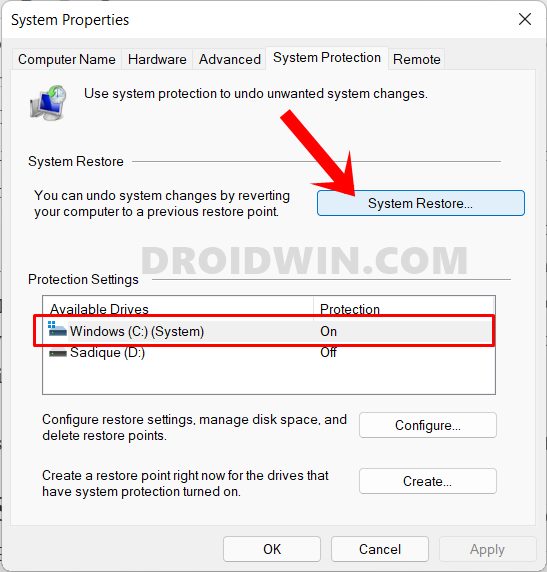
- Windows will now bring up the backup under the Recommended Restore section. This is the backup that it finds most suitable according to your PC’s current condition.
- If you are satisfied with it, enable the Recommended Restore option and hit Next.
- However, if you wish to select any other custom backup, then select Chose a Different Restore point and click Next.
- Now select the desired restore point and hit Next.

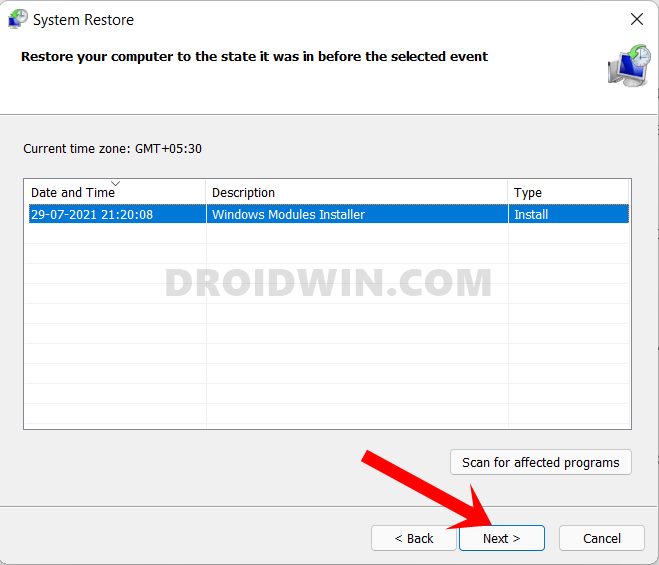
- Windows will now bring up the finalized screen showing all your selections. You may click on the Scan for Affected program option and get a list of all the programs that would be uninstalled/re-installed after this restore.

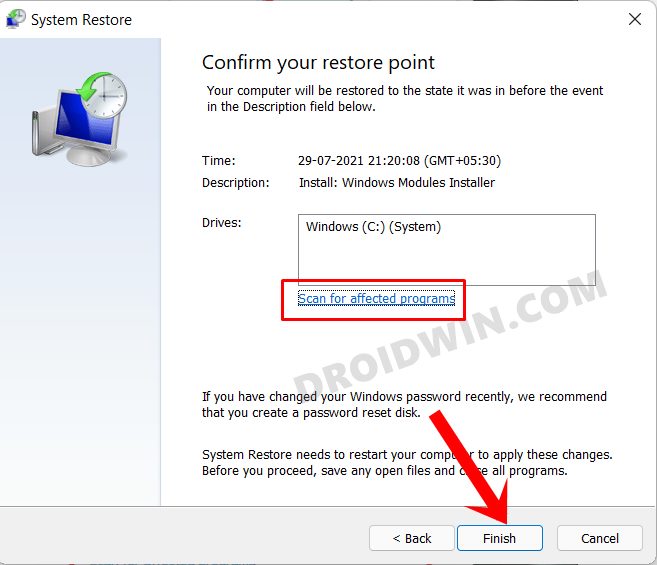
- If everything is as per your requirement, hit the Finish button and wait for the restore to complete.
- Once done, your PC will automatically boot to that system restore point, with the underlying bug being resolved.
So with this, we round off the guide on how you could fix the issue of the Registry Editor not working issue on your Windows 11 PC. We have listed ten different methods for the same. Do let us know in the comments section which one spelled out success for you. Likewise, all your queries are welcomed in the comments below.
